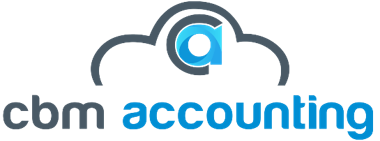[lwptoc]
Value Added Tax (VAT) is a significant aspect of running a business in the UK. Understanding when and how to register for VAT is crucial for compliance and efficient financial management. This guide will walk you through the VAT registration process, helping you determine if and when it’s right for your business.
What is VAT?
VAT is a consumption tax added to most goods and services in the UK. VAT-registered businesses act as intermediaries, collecting VAT on their sales (output VAT) and reclaiming VAT paid on their purchases (input VAT).
When Must You Register for VAT?
- Mandatory Registration:
- You must register for VAT if your taxable turnover exceeds the current VAT threshold (£85,000 as of the current tax year) in any rolling 12-month period.
- You must also register if you expect your taxable turnover to exceed the threshold in the next 30 days.
- Voluntary Registration:
- Even if you don’t meet the mandatory registration requirements, you can voluntarily register for VAT.
- This can be beneficial if you purchase a lot of goods or services subject to VAT, as you can reclaim the input VAT.
- It can also enhance your business’s credibility, as it demonstrates that you are a well-established entity.
What is Taxable Turnover?
Taxable turnover includes the value of all your VAT-taxable sales. This includes sales of goods and services that are subject to the standard, reduced, or zero VAT rates. It does not include exempt supplies.
VAT Rates and Schemes
- Standard Rate (20%): Applied to most goods and services.
- Reduced Rate (5%): Applied to some goods, such as home energy.
- Zero Rate (0%): Applied to essential goods like food and children’s clothing.
Businesses can also opt for VAT schemes to simplify reporting:
- Flat Rate Scheme: Suitable for small businesses with lower VAT obligations.
- Cash Accounting Scheme: Pay VAT only when invoices are paid.
- Annual Accounting Scheme: Submit one annual return instead of quarterly.
How to Register for VAT:
1. Online Registration:
- The easiest way to register for VAT is online through the HMRC website.
- You’ll need to create an online account and provide information about your business.
2.Required Information:
- Your business name and address.
- Your National Insurance number (if you’re a sole trader) or company registration number.
- Your business bank account details.
- Your business activity and standard industrial classification (SIC) code.
- Your expected turnover.
- Your VAT accounting scheme (standard, cash, or flat rate).
3.VAT Registration Certificate:
- Once your registration is approved, you’ll receive a VAT registration certificate from HMRC.
- This certificate will include your VAT registration number and the date your registration takes effect.
Benefits of Voluntary VAT Registration:
- Reclaiming Input VAT: You can reclaim VAT paid on your business purchases, reducing your costs.
- Enhanced Credibility: VAT registration can enhance your business’s image, particularly when dealing with other VAT-registered businesses.
- Improved Cash Flow (In some cases): If your business predominantly supplies zero-rated goods, you will receive more VAT back from HMRC than you will charge to customers.
VAT Responsibilities & Compliance
Registered businesses must:
- Charge the correct VAT rate on sales.
- Keep detailed VAT records for at least six years.
- File VAT returns and pay any owed VAT on time (usually quarterly).
- Use Making Tax Digital (MTD) software for VAT submissions.
Penalties for Non-Compliance
Failure to register, late payments, or incorrect filings can result in fines and interest charges. It is crucial to comply with VAT obligations to avoid HMRC penalties.
Key Considerations:
- Accurate Record Keeping: Maintain accurate records of all your VAT transactions.
- VAT Returns: You must submit regular VAT returns to HMRC, typically quarterly.
- VAT Invoices: Issue VAT invoices to your customers, detailing the VAT charged.
- Making Tax Digital (MTD) for VAT: Most VAT-registered businesses must keep digital records and submit their VAT returns using MTD-compatible software.
Tips for a Smooth VAT Registration:
- Plan Ahead: If you expect your turnover to reach the threshold, start preparing for VAT registration in advance.
- Seek Professional Advice: If you’re unsure about any aspect of VAT registration, consult with an accountant or tax advisor.
- Stay Informed: Keep up-to-date with changes in VAT rules and regulations.
By understanding the VAT registration process and its implications, you can ensure your business remains compliant and financially sound.
To know more in detail, visit our official website: https://cbmaccounting.co.uk/.

